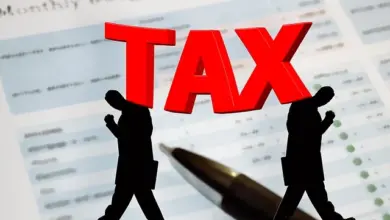Pension and Retirement Savings in the Netherlands

Planning for retirement is a critical aspect of financial stability, and in the Netherlands, the pension system plays a significant role in ensuring that individuals can enjoy a comfortable life after they stop working. The Dutch pension system is widely regarded as one of the best in the world, combining public, occupational, and private components to provide comprehensive coverage. Below, we delve into the key aspects of pensions and retirement savings in the Netherlands, offering insights for both residents and expatriates.
1. Overview of the Dutch Pension System
The Dutch pension system operates on a three-pillar model:
First Pillar: AOW (Algemene Ouderdomswet)
- What It Is: The AOW is the state pension provided by the government to all residents who have lived or worked in the Netherlands.
- Eligibility: To qualify for AOW, you must be at least 67 years old (the retirement age increases gradually; it will reach 68 by 2029). The amount you receive depends on how long you have resided in the Netherlands during your working years.
- Funding: AOW is funded through payroll taxes deducted from employees’ salaries. Employers also contribute to this fund.
- Benefits: The AOW provides a basic income for retirees, but it is typically insufficient to cover all living expenses. In 2023, the maximum annual AOW payout for a single person was approximately €12,400, while couples received around €19,000 combined.
Second Pillar: Occupational Pensions (Bedrijfspensioen)
- What It Is: Occupational pensions are employer-sponsored plans managed by collective pension funds (pensioenkassen).
- Eligibility: Most employees in the Netherlands participate in an occupational pension scheme as part of their employment contract. These schemes are often governed by Collective Labor Agreements (CAOs), which define contribution rates and benefits.
- Funding: Contributions are made jointly by employers and employees. The exact percentage varies depending on the industry and agreement but typically ranges between 15% and 30% of gross salary.
- Types of Schemes:
- Defined Benefit (DB) Plans: Guarantee a fixed monthly pension based on factors like years of service and final salary.
- Defined Contribution (DC) Plans: Provide no guaranteed payout; instead, contributions accumulate in a personal account, which can be converted into a pension upon retirement.
- Portability: If you change jobs, your pension rights are usually transferable to a new scheme or retained in the old one.
Third Pillar: Private Pensions
- What It Is: Private pensions allow individuals to save independently for retirement through tax-advantaged products such as savings accounts, annuities, or investment plans.
- Eligibility: Anyone can invest in third-pillar arrangements, regardless of participation in AOW or occupational pensions.
- Tax Benefits: Contributions to certain private pension products are tax-deductible up to a specified limit. Additionally, withdrawals during retirement may be taxed at a lower rate.
- Flexibility: Third-pillar options offer more control over investments and withdrawal timing compared to first- and second-pillar schemes.
2. Key Features of the Dutch Pension System
Automatic Enrollment
Most workers in the Netherlands are automatically enrolled in an occupational pension plan through their employer. This ensures widespread participation and reduces the risk of under-saving for retirement.
Indexation
Pensions in the Netherlands are indexed to inflation, meaning payouts increase annually to maintain purchasing power. This feature helps protect retirees against rising living costs.
Early Retirement Options
While the official retirement age is increasing, some individuals may opt for early retirement with reduced benefits. Early retirement provisions vary depending on the specific pension scheme.
Integration with EU Systems
For expats moving within Europe, the Dutch pension system integrates with other EU countries’ systems. Contributions made in different member states can be combined to calculate total entitlements.
3. Challenges Facing the Dutch Pension System
Despite its strengths, the Dutch pension system faces several challenges:
Aging Population
As the population ages, there is growing pressure on the AOW and occupational pension funds to sustain payouts. Policymakers continue to adjust retirement ages and contribution rates to address these demographic shifts.
Transition from DB to DC Plans
Many occupational pension schemes are shifting from defined benefit to defined contribution models. While this gives individuals more flexibility, it also places greater responsibility on them to manage their retirement savings wisely.
Low Interest Rates
Persistent low interest rates have impacted the funding levels of pension funds, leading to stricter regulations and reduced guarantees in some cases.
4. Tips for Managing Retirement Savings in the Netherlands
Start Early
Begin contributing to pension plans as soon as possible to maximize the power of compound interest and ensure adequate savings by retirement age.
Understand Your Rights
Regularly review your pension statements to stay informed about your accumulated entitlements. Use online tools provided by pension funds to project future payouts.
Explore Third-Pillar Options
Supplement your AOW and occupational pensions with private savings to achieve a higher standard of living in retirement. Consult a financial advisor to identify suitable products based on your goals and risk tolerance.
Plan for Tax Implications
Be aware of the tax treatment of pension income and contributions. For example, withdrawing large sums from private pension accounts may trigger higher tax liabilities.
Consider Mobility
If you plan to work or retire outside the Netherlands, understand how cross-border regulations affect your pension rights. Seek advice if necessary to optimize your global retirement strategy.
5. Special Considerations for Expats
Expatriates living in the Netherlands should pay special attention to the following:
Building Entitlements
Even short-term stays in the Netherlands can contribute to AOW entitlements and participation in occupational pension schemes. Ensure your employer registers you correctly with relevant authorities.
Transferring Pensions
When leaving the country, you may choose to leave your Dutch pension contributions behind or transfer them to another jurisdiction. Evaluate the pros and cons of each option carefully.
Double Taxation Treaties
Take advantage of double taxation agreements between the Netherlands and your home country to avoid paying taxes twice on pension income.


